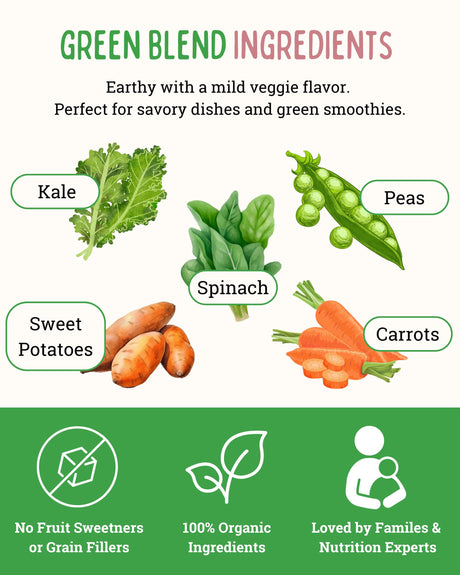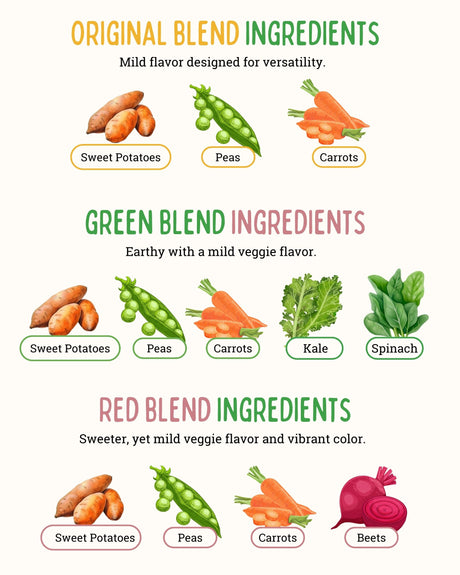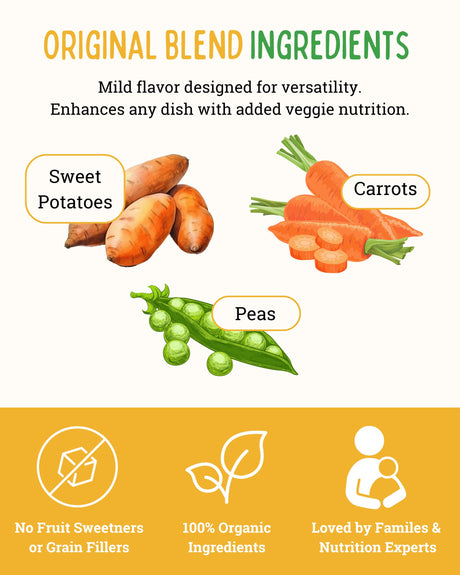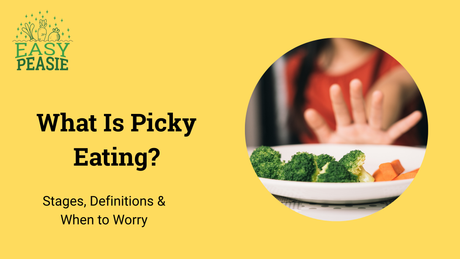Your toddler suddenly refuses the pasta they loved last week, your preschooler won't touch anything green, and you're wondering if this is normal picky eating or something more serious. Between well-meaning advice from family members and conflicting information online, it's hard to know what's typical childhood behavior and what deserves professional attention.
Picky eating is one of the most common concerns parents face, yet there's often confusion about what it actually means and how it develops. Understanding the definition of picky eating, recognizing its normal stages, and knowing when typical selectivity crosses into concerning territory can help you respond appropriately to your child's eating behaviors.
Whether you're dealing with a toddler who's suddenly rejecting foods they previously loved or an older child with a persistently limited diet, knowing what's happening developmentally and what requires intervention can reduce your stress while ensuring your child gets the support they need.
Defining Picky Eating: What Does It Really Mean?
The Basic Definition
Picky eating, also called selective eating or food neophobia, refers to eating patterns characterized by limited food variety, strong food preferences, and reluctance to try new foods. While there's no single universally accepted definition, most experts agree that picky eaters consume a narrower range of foods than their peers and show consistent patterns of food refusal or avoidance.
The key characteristic that defines picky eating is selectivity - children accept some foods while refusing others based on characteristics like taste, texture, appearance, or brand. This differs from general poor appetite or feeding difficulties related to medical conditions.
How Many Foods Define "Picky"?
Research varies on specific numbers, but generally, children who eat fewer than 30 different foods are considered picky eaters, while those eating fewer than 20 foods may have more significant selectivity. However, it's not just about the number - the pattern of refusal, intensity of reactions, and impact on nutrition and family life also matter.
A child who happily eats 25 different foods from various food groups may be managing better nutritionally than one who eats 30 foods but they're all from the same category (like only carbohydrates or only dairy products).
Typical vs. Problematic Picky Eating
Most picky eating falls within the range of normal childhood development and doesn't require professional intervention. Typical picky eating usually:
- Begins in toddlerhood and gradually improves over time
- Allows the child to maintain adequate growth and nutrition
- Doesn't cause extreme distress for child or family
- Includes at least one food from most major food groups
- Responds to gentle encouragement and exposure over time
Problematic picky eating that may need professional evaluation includes:
- Eating fewer than 20 foods total
- Complete refusal of entire food groups
- Lack of improvement or worsening over time
- Significant impact on growth or development
- Extreme anxiety or distress around mealtimes
- Interference with social activities involving food
The Developmental Stages of Picky Eating
Infancy: The Wide-Open Window (Birth to 12 Months)
During the first year of life, most babies are relatively open to new tastes and textures, particularly during the early months of solid food introduction. This period represents a critical window for flavor exposure and acceptance.
Characteristics of this stage:
- High acceptance of new foods and flavors
- Curiosity about different tastes and textures
- Relatively easy introduction of variety
- Limited food preferences or aversions
What's happening developmentally: Babies are hardwired to explore their environment through their mouths, and their taste preferences are still forming. Early and varied exposure to different foods during this stage can influence long-term food acceptance.
Parenting implications: This is the ideal time to introduce a wide variety of healthy foods, including vegetables, different proteins, and various textures. The more variety offered during this window, the better foundation for future food acceptance.
Toddlerhood: The Great Narrowing (12 Months to 3 Years)
This is when most parents first notice picky eating emerging. Previously adventurous eaters may suddenly become highly selective, and new food acceptance often drops dramatically.
Characteristics of this stage:
- Sudden refusal of previously accepted foods
- Strong preferences for familiar items
- Resistance to trying new foods (food neophobia)
- Desire for sameness and predictability in foods
- Limited willingness to accept new textures or flavors
What's happening developmentally: This selective eating pattern has evolutionary roots - as toddlers become mobile and more independent, natural caution about unfamiliar foods may have protected early humans from consuming potentially dangerous items. This is a normal developmental phase, not a parenting failure.
Additionally, toddlers are asserting their independence and learning they can control what goes into their bodies. Food becomes one area where they can exercise autonomy.
Parenting implications: This stage requires patience and perspective. While it's frustrating to see food acceptance narrow, this is typically a normal phase that doesn't require dramatic intervention. Continued gentle exposure to variety, without pressure, helps maintain openness to foods even if immediate acceptance doesn't occur.
Preschool Years: Peak Pickiness (3 to 5 Years)
Many children experience their most intense picky eating during the preschool years, though patterns established in toddlerhood often continue.
Characteristics of this stage:
- Very strong food preferences and routines
- High sensitivity to food appearance and presentation
- Continued neophobia (fear of new foods)
- Possible food jags (eating the same food repeatedly)
- Increased awareness of what peers eat
What's happening developmentally: Preschoolers are developing cognitive abilities that make them more aware of food differences and more capable of expressing strong preferences. Their slower growth rate compared to infancy means appetite naturally decreases, which can intensify selective eating.
Social awareness increases during this stage, and children begin comparing their eating to peers, which can either encourage or discourage variety depending on peer influences.
Parenting implications: Maintaining regular family meals, continuing to offer variety without pressure, and avoiding making separate "special" meals all support gradual diet expansion. This is also when involving children in age-appropriate food preparation can increase interest and acceptance.
Early School Age: Gradual Expansion (5 to 8 Years)
For many children, picky eating begins to naturally improve during early elementary years, though this isn't universal.
Characteristics of this stage:
- Slight increase in food acceptance for some children
- Growing influence of peer eating behaviors
- Development of taste preferences based on experience
- Increased ability to try new foods in social settings
- Some children maintain very selective patterns
What's happening developmentally: School exposure introduces children to different foods and eating environments. Peer influence becomes stronger, and many children become more willing to try foods they see friends eating. Cognitive development allows for better understanding of nutrition concepts.
However, for about 20-30% of children, picky eating persists beyond this stage without significant improvement.
Parenting implications: This stage offers opportunities to leverage peer influence positively and involve children in food choices and preparation. For children whose selectivity isn't improving, this may be the time to consider whether professional evaluation would be helpful.
When Picky Eating Persists: Beyond Age 8
While many children naturally outgrow picky eating, research shows that selective eating patterns can persist into later childhood, adolescence, and even adulthood for some individuals.
Persistent picky eating characteristics:
- Limited diet (often fewer than 20-30 foods) continuing past age 7-8
- Minimal improvement despite repeated exposure
- Possible sensory sensitivities affecting food acceptance
- May include anxiety around trying new foods
- Can impact social situations and activities
What's different: When picky eating persists beyond typical developmental stages without improvement, it may indicate underlying factors like sensory processing differences, anxiety, or learned patterns that require different approaches than simply waiting for the child to outgrow the phase.
Factors That Influence Picky Eating Development
Temperament and Personality
Some children are naturally more cautious and slow-to-warm-up in all areas of life, including food. These temperamental traits can make picky eating more pronounced and longer-lasting.
Temperamental factors include:
- Sensitivity to sensory input
- General cautiousness with new experiences
- Need for predictability and routine
- Intensity of emotional responses
- Adaptability to change
Sensory Processing Differences
Children who are particularly sensitive to textures, smells, or tastes may experience foods more intensely than others, making picky eating more pronounced and challenging to address.
Sensory processing affects how children experience:
- Food textures in the mouth
- Food smells and aromas
- Visual appearance of foods
- Sounds of chewing and eating
- Temperature sensations
Early Feeding Experiences
Experiences during infancy and toddlerhood can influence later eating patterns. Factors like limited early food variety, pressure to eat, negative experiences with choking or gagging, or medical issues affecting feeding can all contribute to selective eating.
Family Dynamics and Feeding Practices
How families approach mealtimes and food introduction affects picky eating development. High pressure to eat, using food as rewards or punishment, short-order cooking for picky eaters, and family stress around eating can all intensify selective patterns.
Helpful family practices include:
- Regular family meals without pressure
- Exposure to variety without forcing consumption
- Neutral responses to food refusal
- Modeling adventurous eating
- Avoiding battles over food
Nutritional Considerations with Picky Eating
Meeting Nutritional Needs with Limited Diets
Many picky eaters maintain adequate nutrition despite limited variety, especially when the foods they accept include items from different food groups. However, very restrictive diets can lead to nutritional gaps that need monitoring.
Common nutritional concerns:
- Iron deficiency when meat is refused
- Calcium and vitamin D with dairy refusal
- Fiber deficiency with limited fruit and vegetable intake
- Limited protein variety
- Vitamin and mineral gaps from missing food groups
Strategic Nutrition Planning
When children have limited diets, focusing on nutrient-dense accepted foods becomes important. If a child eats peas but no other vegetables, ensuring regular pea consumption provides some vegetable nutrition while working on expanding variety.
For children with very restricted diets, concentrated nutrition sources can help bridge nutritional gaps. Products like Easy Peasie Veggie Powder Blends provide vegetable nutrition in forms that can be mixed into accepted foods, supporting nutritional needs while working on expanding the diet long-term.
Growth Monitoring
Regular monitoring of height and weight helps ensure that picky eating isn't impacting growth. Most picky eaters grow normally, but tracking growth patterns provides reassurance and identifies any concerns early.
When to Seek Professional Help
Red Flags Requiring Evaluation
While most picky eating is developmentally normal, certain signs indicate the need for professional assessment:
Medical evaluation needed:
- Poor growth or weight loss
- Extreme reactions to food like gagging, choking, or vomiting with typical foods
- Eating fewer than 15-20 total foods
- Complete avoidance of entire food groups or textures
- Mealtime duration exceeding 30-40 minutes regularly
Developmental/therapeutic evaluation helpful:
- Limited diet persisting beyond age 6-7 without improvement
- Significant sensory sensitivities affecting multiple areas of life
- Extreme anxiety or distress around food and eating
- Social isolation due to eating difficulties
- Family stress significantly impacted by feeding challenges
Types of Professional Support
Different professionals address various aspects of feeding difficulties:
Pediatricians or family doctors evaluate growth, nutrition, and medical factors affecting eating.
Feeding therapists (occupational therapists or speech-language pathologists) address sensory aspects, oral motor skills, and behavioral patterns affecting eating.
Registered dietitians with pediatric experience assess nutritional adequacy and provide strategies for meeting needs with limited diets.
Mental health professionals may be helpful when anxiety significantly impacts eating or when family dynamics around food need support.
Supporting Your Picky Eater Through the Stages
General Principles Across All Ages
Regardless of your child's stage or severity of picky eating, certain principles support healthy eating development:
Pressure-free approach: Avoiding pressure to eat allows children to trust their internal hunger and fullness cues while reducing mealtime stress.
Regular exposure: Continuing to offer variety without forcing consumption maintains familiarity and potential for eventual acceptance.
Division of responsibility: Parents decide what foods are offered, when, and where, while children decide whether to eat and how much. This framework, developed by feeding expert Ellyn Satter, reduces power struggles while maintaining appropriate parental structure.
Modeling adventurous eating: Children learn by watching adults. Enjoying a variety of foods yourself demonstrates positive eating attitudes.
Stage-Specific Strategies
For toddlers: Keep portions very small, accept that appetite fluctuates, continue offering new foods alongside accepted items, and stay calm during food refusals.
For preschoolers: Involve in age-appropriate food preparation, maintain consistent meal and snack schedules, avoid becoming a short-order cook, and use family meals as opportunities for exposure.
For school-age children: Include in meal planning and grocery shopping, teach basic cooking skills, discuss nutrition in age-appropriate ways, and leverage peer influence when possible.
Managing Family Stress
Picky eating affects the entire family, and managing parental stress is crucial for long-term success.
Stress management strategies:
- Focus on long-term patterns rather than individual meals
- Celebrate small victories in food acceptance
- Seek support from other parents facing similar challenges
- Maintain perspective that most children eventually expand their diets
- Know when to seek professional help rather than struggling alone
Looking Forward: Long-Term Outcomes
Natural Resolution
Most children who experience typical picky eating gradually expand their diets over time, particularly with continued gentle exposure and positive family meal experiences. Research suggests that for many children, food acceptance increases naturally through adolescence.
Persistent Patterns
For the subset of children whose picky eating persists, early identification and appropriate support can prevent nutritional complications and reduce family stress. Even when selectivity continues, strategies exist to ensure adequate nutrition and minimize social impacts.
Building Positive Relationships with Food
The goal isn't just expanding the number of foods eaten, but developing healthy, positive relationships with eating that last into adulthood. This means avoiding approaches that create food anxiety or negative associations, even if they might produce short-term increases in consumption.
Understanding that picky eating exists on a spectrum - from normal developmental selectivity to more persistent patterns requiring support - helps parents respond appropriately to their child's individual needs. Whether your child is in the thick of toddler neophobia or dealing with longer-term selective eating, knowing what's typical, what's concerning, and what strategies help can reduce stress while supporting healthy eating development.
Remember that picky eating, while frustrating, is rarely a crisis. Most children maintain adequate nutrition and gradually expand their diets with patient, pressure-free approaches. For those who need additional support, recognizing when professional help would be beneficial ensures children get appropriate intervention while families get the guidance they need to navigate feeding challenges with less stress and more confidence.
This article is for educational purposes only and does not constitute medical advice. Always consult with your child's healthcare provider for concerns about eating patterns, growth, or development.













